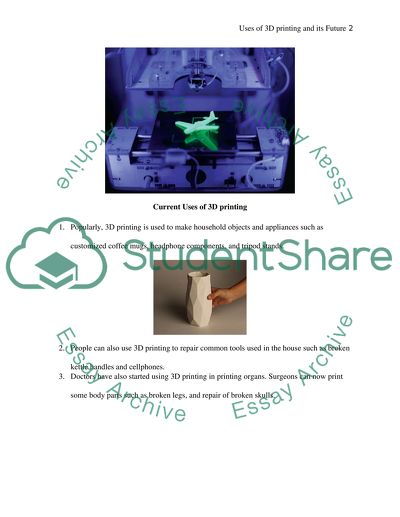Cite this document
(“Evaluate the current uses of 3D printing. Discuss the potential future Essay - 3”, n.d.)
Retrieved from https://studentshare.org/miscellaneous/1695429-evaluate-the-current-uses-of-3d-printing-discuss-the-potential-future-of-3d-printing-based-on-current-issues-identified-in-the-literature
Retrieved from https://studentshare.org/miscellaneous/1695429-evaluate-the-current-uses-of-3d-printing-discuss-the-potential-future-of-3d-printing-based-on-current-issues-identified-in-the-literature
(Evaluate the Current Uses of 3D Printing. Discuss the Potential Future Essay - 3)
https://studentshare.org/miscellaneous/1695429-evaluate-the-current-uses-of-3d-printing-discuss-the-potential-future-of-3d-printing-based-on-current-issues-identified-in-the-literature.
https://studentshare.org/miscellaneous/1695429-evaluate-the-current-uses-of-3d-printing-discuss-the-potential-future-of-3d-printing-based-on-current-issues-identified-in-the-literature.
“Evaluate the Current Uses of 3D Printing. Discuss the Potential Future Essay - 3”, n.d. https://studentshare.org/miscellaneous/1695429-evaluate-the-current-uses-of-3d-printing-discuss-the-potential-future-of-3d-printing-based-on-current-issues-identified-in-the-literature.


